The 1945 Mercury Dime’s value ranges from $5 to over $25,000 depending on condition, mint mark, and grade. Circulated coins are worth $4.65-$7.25, while uncirculated versions start at $50. Key value factors include the rare “Micro S” mint mark variety and “Full Bands” (FB) designation. High-grade specimens command premium prices: MS-66FB examples exceed $1,500, MS-67+FB can surpass $10,000, and rare MS68FB Micro S coins have sold for over $25,000. Professional grading significantly impacts value, with mint errors like broadstrikes also adding premium worth for collectors.
That ten-cent piece hiding in your grandfather’s drawer could be worth more than a luxury vacation. The 1945 Mercury dime represents one of the final chapters in a beloved coin series, and certain varieties command extraordinary premiums. While most circulated examples trade near their silver content value around five dollars, specific mint mark varieties and condition factors can push values beyond $25,000, making this World War II-era dime a serious collector target.
Understanding the 1945 Mercury Dime Series
The 1945 Mercury dime marked the penultimate year of production for Adolph Weinman’s iconic design, which featured Liberty wearing a winged cap symbolizing freedom of thought. Three mints struck these dimes during 1945: Philadelphia (no mint mark), Denver (D), and San Francisco (S). The Philadelphia facility produced 159,130,000 pieces, Denver contributed 40,245,000 coins, and San Francisco struck 41,920,000 dimes. These substantial mintage figures suggest common availability, yet condition rarities and specific varieties create significant value disparities.
The coin’s specifications include a 90% silver and 10% copper composition, weighing 2.5 grams with a diameter of 17.91 millimeters. The reverse displays a fasces (bundle of rods with an axe) and an olive branch. The horizontal bands wrapping the fasces became the critical detail determining premium valuations, with fully struck examples earning the coveted Full Bands designation.
Philadelphia Mint 1945 Mercury Dimes (No Mint Mark)
Philadelphia-struck 1945 dimes carry no mint mark, appearing on the reverse just above the rim to the left of the fasces on marked varieties. Despite the massive 159 million mintage, well-preserved examples remain surprisingly scarce. Circulated pieces in Good to Fine condition trade between $4.50 and $6.00, primarily reflecting their 0.0723 troy ounces of silver content. About Uncirculated examples (AU-50 to AU-58) jump to $12 to $25 depending on surface quality and luster retention.
Mint State specimens begin at approximately $35 for MS-60 grades, with MS-63 examples typically selling for $50 to $75. The value accelerates dramatically for higher grades: MS-65 pieces command $125 to $200, while MS-66 examples reach $300 to $500. The Full Bands designation multiplies these values substantially, with MS-65FB coins trading at $400 to $650, and MS-66FB examples fetching $1,200 to $2,000 according to recent Heritage Auctions data.
The rarest Philadelphia 1945 dimes achieve MS-67 grades with Full Bands. Only a small population exists in professional grading service census reports, with PCGS recording fewer than 50 MS-67FB examples. These exceptional survivors sell for $3,500 to $6,000 at major numismatic auctions. A single MS-68FB specimen resides in the PCGS population report, though recent public auction records remain unavailable for this grade.
Denver Mint 1945-D Mercury Dimes
The Denver facility’s 40.2 million production represents the lowest mintage among the three 1945 varieties, theoretically making these dimes scarcer. However, survival rates don’t always correlate directly with original mintage numbers. Circulated 1945-D dimes trade similarly to Philadelphia issues at $5.00 to $7.00 in typical worn condition, with About Uncirculated pieces commanding $15 to $30.
Mint State 1945-D dimes begin around $40 for MS-60 grades, with MS-63 examples typically valued at $60 to $90. MS-65 specimens trade between $150 and $250, while MS-66 pieces reach $400 to $700. The Full Bands designation significantly impacts Denver dimes, with MS-65FB examples selling for $600 to $900, and MS-66FB coins commanding $1,800 to $3,000.
The 1945-D achieves particularly strong prices in MS-67FB condition, where fewer than 30 examples exist in combined PCGS and NGC populations. Recent auction results show these premium Denver dimes selling between $5,000 and $8,500 depending on eye appeal and strike characteristics. Stack’s Bowers Galleries sold an exceptional MS-67FB example for $7,050 in their 2022 Baltimore Auction, demonstrating sustained collector demand for top-tier Denver specimens.
San Francisco Mint 1945-S: The Micro S Variety
San Francisco’s 41.9 million mintage produced two distinct varieties that create massive value differences: the normal S and the scarce Micro S. The standard 1945-S mint mark measures approximately 1.5 millimeters, while the Micro S variant features a noticeably smaller mint mark measuring roughly 0.9 millimeters. This punch variety occurred when the San Francisco Mint used a smaller-sized S punch typically reserved for gold coins, creating one of the most significant Mercury dime varieties.
Standard 1945-S dimes in circulated condition trade at $4.65 to $7.25, with About Uncirculated pieces bringing $15 to $28. Mint State examples without Full Bands start at $45 for MS-60, reaching $75 to $110 for MS-63, and $175 to $300 for MS-65. MS-66 standard S dimes command $450 to $800 depending on surfaces and luster quality.
The Micro S variety transforms these values dramatically. Even in MS-63 condition, a certified Micro S brings $300 to $500, while MS-65 examples reach $1,500 to $2,500. The Full Bands designation on Micro S dimes creates exceptional premiums: MS-65FB pieces sell for $3,000 to $5,000, and MS-66FB examples command $8,000 to $12,000 according to PCGS Price Guide data.
The absolute pinnacle involves MS-67 and MS-68 Micro S dimes with Full Bands. GreatCollections sold an MS-67FB Micro S for $18,400 in 2021, while an extraordinary MS-68FB example achieved $26,400 in a 2020 Heritage Auctions sale. PCGS reports only three MS-68FB Micro S specimens in their census, making this combination among the rarest Mercury dime issues in top preservation.
| Grade | No Mint Mark | 1945-D | 1945-S Standard | 1945-S Micro S |
|---|---|---|---|---|
| Good-4 | $4.50 | $5.00 | $4.65 | N/A |
| AU-50 | $12 | $15 | $15 | $75 |
| MS-63 | $50 | $60 | $75 | $400 |
| MS-65 | $125 | $150 | $175 | $2,000 |
| MS-65FB | $500 | $700 | $850 | $4,000 |
| MS-66FB | $1,500 | $2,200 | $2,800 | $10,000 |
| MS-67FB | $4,500 | $6,500 | $8,000 | $18,000 |
Decoding the Full Bands Designation
The Full Bands designation represents the single most important value factor for uncirculated Mercury dimes. The reverse design’s fasces features horizontal bands wrapping the bundle of rods, with the central bands serving as the strike indicator. Full Bands specimens display complete, unbroken separation of these horizontal bands across the fasces, particularly the two central bands that typically show weakness.
Achieving Full Bands requires exceptional striking pressure, properly prepared dies, and optimal planchet characteristics. Even with high mintages, only a small percentage of Mercury dimes received sufficient strike to qualify for this designation. Professional grading services like PCGS and NGC evaluate band completeness under magnification, requiring full separation without any breaks or merging where the bands cross the vertical rods.
The rarity of Full Bands examples explains the dramatic premiums. While an MS-65 standard 1945-S might sell for $200, an MS-65FB example commands $850—more than quadruple the value. This premium percentage often increases at higher grades, where MS-67FB coins might bring ten times the value of MS-67 pieces without Full Bands. Collectors pursuing registry sets particularly covet Full Bands specimens, driving competitive bidding at major auctions.
Notable Error Varieties and Mint Mistakes
Beyond the Micro S variety, 1945 Mercury dimes occasionally display mint errors that create additional collector interest. Broadstrike errors occur when the collar die fails to contain the planchet during striking, producing dimes with expanded diameters beyond the standard 17.91 millimeters. These errors typically trade at $150 to $400 depending on the broadstrike extent and overall condition.
Off-center strikes represent another error category, valued based on the percentage of design missing and whether the date remains visible. A 1945 dime struck 10% off-center with full date visibility might bring $100 to $200, while more dramatic 30-40% off-center errors with visible dates command $300 to $600. Examples struck severely off-center without dates generally sell for lower premiums around $75 to $150.
Doubled die varieties exist within the 1945 Mercury dime series, though none achieve the prominence of earlier years like the 1942/1-D overdate. Minor doubling on date digits or lettering adds modest premiums of $25 to $100 for circulated examples, with uncirculated specimens potentially reaching $200 to $400 depending on doubling strength and grade. Clipped planchet errors, caused by improper punching from metal strips, typically sell for $50 to $150 based on clip size and location.
Lamination errors occasionally appear on 1945 dimes, resulting from impurities in the silver-copper alloy that create flaking or peeling surfaces. While technically mint errors, laminations often detract from eye appeal rather than adding premium value unless particularly dramatic. Most lamination error dimes trade at $30 to $75, though spectacular examples might reach $150 in higher grades.
Authentication and Grading Considerations
Distinguishing the valuable Micro S variety from standard 1945-S dimes requires careful examination, preferably using 5x to 10x magnification. The Micro S measures noticeably smaller than the normal S mint mark, but counterfeiting attempts exist where standard S mint marks have been altered. Professional authentication through PCGS or NGC provides certainty for higher-value specimens, with grading fees typically ranging from $35 to $150 depending on service level.
The Full Bands determination presents another area where professional grading adds value certainty. What appears to be Full Bands to the naked eye often shows subtle breaks or weakness under grading service magnification. Given the substantial premiums Full Bands specimens command, certification from major services significantly enhances marketability and buyer confidence.
Counterfeit 1945 Mercury dimes remain relatively uncommon compared to rare date issues, but altered mint marks represent a concern. Some unscrupulous sellers have attempted to add S mint marks to Philadelphia specimens or alter standard S mint marks to resemble the Micro S variety. Examining mint mark punch shape, depth, and positioning helps identify alterations, though professional authentication remains advisable for specimens valued above $500.
Surface preservation significantly impacts grade assignments within the Mint State category. Mercury dimes frequently show bagmarks—small contact marks from coins striking each other in mint bags—that limit grades even on otherwise attractive specimens. The highest-grade survivors typically come from original rolls carefully preserved since 1945, avoiding the handling and environmental exposure that degrades most examples.
Building Your 1945 Mercury Dime Collection Strategy
Collectors approaching 1945 Mercury dimes face several strategic options depending on budget and goals. Type collectors seeking a single representative example can acquire attractive circulated pieces for under $10, providing an affordable entry into this classic American series. Upgrading to About Uncirculated or low Mint State grades around MS-63 offers significant eye appeal at $50 to $100 per coin, creating an attractive type set without major investment.
Date and mint mark collectors pursuing complete Mercury dime sets need all three 1945 varieties. Focusing on matched grades creates visual consistency, with MS-64 to MS-65 examples of all three varieties totaling approximately $400 to $600 for standard varieties. Adding the Micro S significantly increases investment, though MS-63 Micro S specimens around $400 provide entry into this important variety without pursuing top grades.
Registry set competitors and advanced collectors target Full Bands specimens in the highest available grades. This approach requires substantial investment, with three-coin 1945 sets in MS-66FB condition totaling $5,000 to $7,000, and MS-67FB sets exceeding $20,000 when including the Micro S variety. These premium specimens offer appreciation potential as condition census coins maintain strong demand among serious numismatists.
Where to Find and Sell 1945 Mercury Dimes
Purchasing 1945 Mercury dimes through reputable sources ensures authenticity and fair pricing. Major auction houses like Heritage, Stack’s Bowers, and GreatCollections regularly offer certified examples across all grade ranges, with detailed photography and bidding histories providing price transparency. Online marketplaces like eBay present opportunities for bargain hunting, though buyers should prioritize listings featuring professional grading service certification for valuable varieties.
Local coin shops provide hands-on examination opportunities and immediate acquisition without shipping delays. Dealers specializing in Mercury dimes often maintain inventory across multiple grades and varieties, offering expertise in identifying the Micro S variety and Full Bands specimens. Estate sales and coin shows occasionally yield uncertified discoveries, though knowledge and careful examination become critical when evaluating raw coins.
Selling 1945 Mercury dimes achieves optimal returns through channels matching the coins’ value tier. Common circulated examples sell efficiently through local dealers at slightly below retail values, typically receiving 80-90% of published pricing guides. About Uncirculated and lower Mint State coins without Full Bands move readily through online marketplaces, coin shows, and dealer networks at competitive prices reflecting current silver content and numismatic premiums.
Premium specimens including Full Bands examples, Micro S varieties, and top-grade coins warrant consignment to major auction houses. These venues attract serious collectors willing to pay strong premiums for condition census pieces, with auction house expertise in marketing, photography, and catalog descriptions maximizing realized prices. Consignment fees typically range from 10-20% of hammer prices, offset by the broader market reach and competitive bidding these platforms generate.
Maximizing Your 1945 Mercury Dime Investment
Smart collectors focus on quality over quantity when building 1945 Mercury dime holdings. A single MS-66FB Micro S specimen offers better appreciation potential than a dozen common-date circulated Mercury dimes, with condition rarity and variety significance driving long-term value growth. Market data from the past twenty years shows top-grade Full Bands Mercury dimes appreciating at 8-12% annually, outpacing inflation and many traditional investments while providing tangible historical artifacts.
Proper storage protects Mercury dime investments from environmental damage that diminishes grade and value. Certified coins in PCGS or NGC holders receive optimal protection, maintaining their assigned grades indefinitely when stored in stable temperature and humidity conditions. Raw uncirculated specimens require individual holders—never PVC-containing flips—and storage in a cool, dry environment away from temperature fluctuations that promote toning or surface degradation.
Market timing influences both purchase and sale opportunities. Mercury dime values generally track silver prices for common circulated pieces, creating buying opportunities when precious metal markets decline. Premium varieties and high-grade specimens show less correlation with silver values, instead responding to collector demand cycles and registry set competition. Monitoring major auction results through price databases like PCGS CoinFacts and Heritage Archives identifies market trends and realistic value expectations.
The 1945 Mercury dime series rewards careful study, selective acquisition, and patient collecting. Whether pursuing the affordable type coin approach or assembling top-grade Full Bands specimens including the coveted Micro S variety, these final-year Mercury dimes offer historical significance and potential appreciation. Start by examining any 1945 dimes in inherited collections—that small S mint mark might represent thousands of dollars hiding in plain sight, waiting for proper identification and professional certification to reveal its true value.
You may be interested:
- 1859 Indian Head Penny Coin Value Complete Errors List And No Mint Mark Worth Guide For Collectors
- 1911 V Nickel Coin Value Guide Complete Errors List And No Mint Mark Worth Today
- 1902 Dime Coin Value Complete Errors List With O S And No Mint Mark Worth Guide
- 1788 Quarter Coin Value Complete Guide Errors List And D S P Mint Mark Worth Revealed
- 1776 To 1976 Bicentennial Half Dollar Coin Value Complete Errors List And What Your D S And No Mint Mark Coins Are Actually Worth
- 1990 Penny Coin Value Errors List How D S And No Mint Mark Pennies Are Worth Thousands Of Dollars

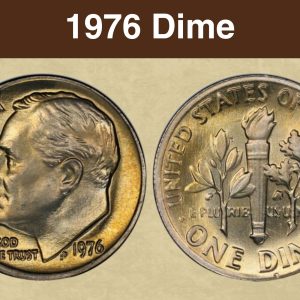
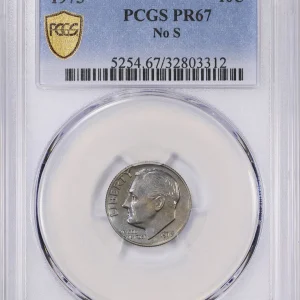
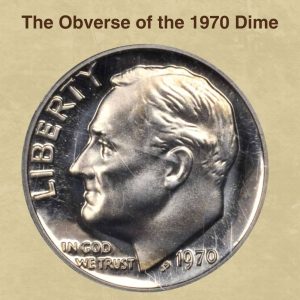
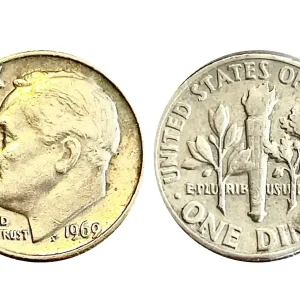
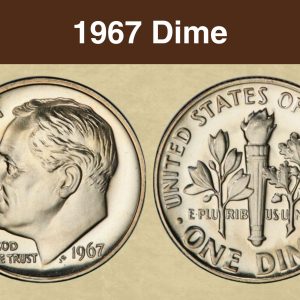
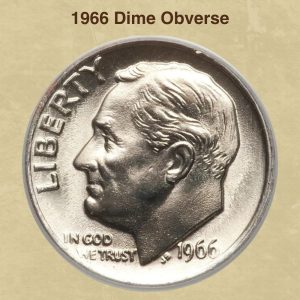
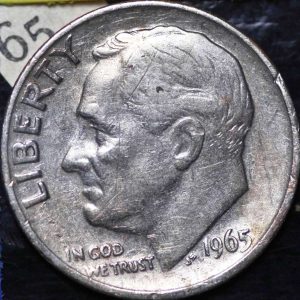
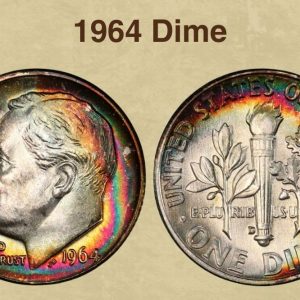
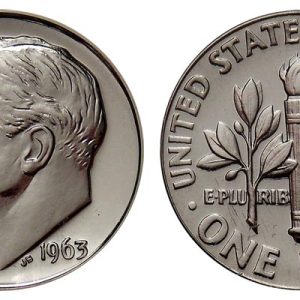
What makes a 1945 dime rare?
Thousands of 1945 Dimes have been certified in Mint State (almost 7,000 at PCGS alone), but barely over a hundred show full Bands. For collectors looking for fully struck Dimes, the 1945 Dime with Full Bands is the ultimate condition-rarity.”
What is a 1945 S dime worth?
A 1945-S Mercury dime’s value ranges from approximately $5 to over $25,000, depending on its condition, mint mark variety, and grade, especially if it has a “Full Bands” designation. Circulated coins are worth around $4.65 to $7.25, while uncirculated versions can be worth $50 or more, with the rare “Micro S” variety and the “Full Bands” attribute commanding significantly higher prices, sometimes into the thousands for high-grade examples.
What is the difference between 1945 S and micro S?
While the difference was quite subtle, some coins featured a shorter, thinner, and more compact “S.” Even the font seemed a bit different, as the so-called “Micro S” displayed serifs while the normal version did not.
Are there any errors on 1945 dimes?
It is also a mintstated graded coin. So you see the MS60. There that means mintstate 60 that is the coin grade on this particular coin. Now this dime here sold for a little over $65.